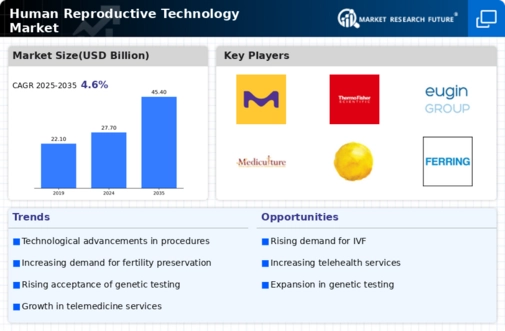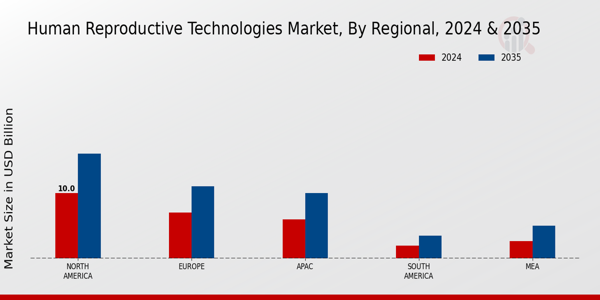The Global Human Reproductive Technology Market is characterized by rapid advancements and an increasing demand for assisted reproductive technologies driven by changing societal norms, infertility rates, and a growing awareness of reproductive health.
This market showcases a competitive landscape marked by significant innovation as firms strive to develop new and improved products and services such as in-vitro fertilization (IVF), cryopreservation, and genetic screening.
The emergence of personalized medicine and technological advancements in mobile health applications also play a crucial role in shaping competition within the market. Companies are not only vying for market share but are also focusing on strategic collaborations, extensive research and development investments, and partnerships to enhance their offerings and address the diverse needs of consumers.
Competitive insights reveal a dynamic environment where agility and innovation are vital for sustained growth and market leadership. Merck KGaA stands as a prominent player within the Global Human Reproductive Technology Market, renowned for its comprehensive portfolio of products and services that cater to various fertility treatments.
The company boasts significant strengths in its research capabilities, allowing it to stay at the forefront of technological advancements in reproductive health. Merck KGaA's commitment to innovation is evident in its continuous investment in developing cutting-edge reproductive technologies and solutions tailored to individual patient needs.
Furthermore, their global presence ensures accessibility to a vast network of healthcare providers, thereby enhancing their ability to deliver timely and effective solutions for various reproductive challenges. This strategic positioning reinforces the company's reputation as a leader in the industry while enabling it to maintain a competitive edge through robust partnerships and collaborations with other entities.
In the realm of the Global Human Reproductive Technology Market, Reproductive Health Science is another key player focusing on providing innovative solutions for fertility and reproductive health challenges.
This organization is committed to enhancing reproductive outcomes through the development of tailored treatments and comprehensive care strategies. Reproductive Health Science leverages advanced research and employs a multidisciplinary approach that combines scientific expertise with patient-centered practices.
Their strengths manifest in the form of specialized programs, state-of-the-art technology for diagnostic and therapeutic applications, and a dedication to advancing reproductive medicine.
By prioritizing high-quality services and fostering collaboration with healthcare professionals, Reproductive Health Science has carved out a significant presence within the market, ultimately contributing to improving reproductive health outcomes for many individuals facing fertility issues.









